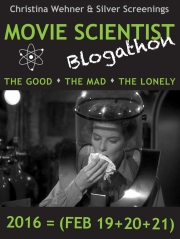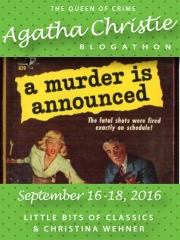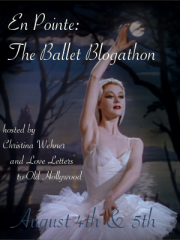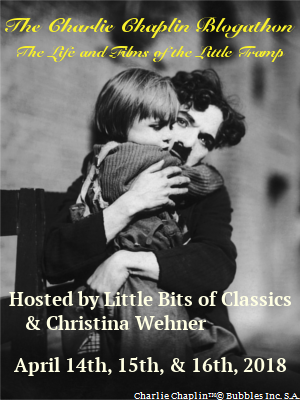 Charles Dickens’ Oliver Twist seems to be one his most often adapted novels. I’ve seen five different film versions, but there are many, many more, from musical to British miniseries to feature film to silent to talkie. Last week, however, I saw the 1922 silent Oliver Twist and David Lean’s 1948 Oliver Twist.
Charles Dickens’ Oliver Twist seems to be one his most often adapted novels. I’ve seen five different film versions, but there are many, many more, from musical to British miniseries to feature film to silent to talkie. Last week, however, I saw the 1922 silent Oliver Twist and David Lean’s 1948 Oliver Twist.
Olive Twist (1922)
I think the best way to think of the silent Oliver Twist is as The Jackie Coogan show. Jackie Coogan is the most full of personality, vital and alive Oliver Twist I have seen yet. He manages the unique feat of being able to co-opt his own story, something that not even the fictional character of Dickens’ novel is able to do. The character of Oliver Twist is, in the words of Norrie Epstein in The Friendly Dickens, a “blank slate” on which all the character seek to put their own stamp. But not Jackie Coogan. He even manages to upstage Lon Chaney as Fagin, though Chaney is certainly good.
Olivr Twist was made one year after Coogan appeared with Charlie Chaplin in The Kid, which feels like an appropriate follow-up film. According to Epstein, Oliver Twist was Chaplin’s favorite novel, which isn’t surprising since Chaplin’s very childhood is essentially Dickensian.
Jackie Coogan has wide, innocent eyes that look up at the camera so mournfully, you wonder how anyone can be cruel to him. But he also brings perhaps just a touch of mischief, which is not something one usually sees in an Oliver. Coogan was eight years old, only one year younger than Oliver’s actual age in the book, But Oliver is usually played by a boy who looks closer to eleven or twelve, making Coogan look so young. It’s hard to imagine anyone imaging that adorable child could be a hardened criminal.
 The movie is actually quite faithful to the book, hitting all the key plot points and characters, but the only other actor who has a chance to make an impression is Lon Chaney as Fagin, though it is still a relatively small role. He shows his remarkable ability to not only transform his face, but his entire posture and manner. But what makes the film work is how Coogan makes us root for and relate directly to the character of Oliver Twist. I can see why he was such a beloved child actor.
The movie is actually quite faithful to the book, hitting all the key plot points and characters, but the only other actor who has a chance to make an impression is Lon Chaney as Fagin, though it is still a relatively small role. He shows his remarkable ability to not only transform his face, but his entire posture and manner. But what makes the film work is how Coogan makes us root for and relate directly to the character of Oliver Twist. I can see why he was such a beloved child actor.
Oliver Twist (1948)
David Lean opens his Oliver Twist with a Gothic flourish, as Oliver’s mother makes her way through the rain and storm to a workhouse, where she gives birth. With the storm, it’s like she’s being persecuted by nature itself. But once she arrives in the workhouse, the film switches from Gothic nature to grim London city, with shadows and grime and the seedy side of life, looking occasionally like a film noir, proving that noir is perfectly compatible with the grim, dirty reality of a Dickens novel.
As a result, this Oliver Twist belongs far more to the villains and grifters of the film. Alec Guinness plays Fagin with considerable zest and heavy makeup. It’s amazing to think he played Herbert Pocket in Lean’s Great Expectations just a few years ago. Initially, Guinness seems to be having some fun with his role, but gradually he reveals him to be the one who embodies real evil as he eggs on Bill Sikes (an effectively brutal Robert Newton) into murdering Nancy (Kay Walsh).
 All Oliver Twist adaptations unashamedly build up to the murder of Nancy. It’s the unacknowledged high-point of any film and filmmakers know audiences are waiting for it with a mixture of anticipation and horror. It has to be one of the most famous murders in literature and Dickens himself was fond if reading that passage aloud to audiences.
All Oliver Twist adaptations unashamedly build up to the murder of Nancy. It’s the unacknowledged high-point of any film and filmmakers know audiences are waiting for it with a mixture of anticipation and horror. It has to be one of the most famous murders in literature and Dickens himself was fond if reading that passage aloud to audiences.
And because the film modifies the story somewhat – eliminating the Maylie thread of the story entirely – it leaves more room for Nancy to emerge as the real heroine of the story (which she is in the book, but she must compete for attention with Rose Maylie). Kay Walsh, I thought was very effective as the prostitute who is touched by Oliver and manages to be the only one to stand between him and the combined forces of Fagin, Sikes and Oliver’s evil half-brother, Monk, even though it kills her. This also makes the horror of the murder all the greater and Lean uses this murder as the spur that brings down Fagin and Sikes.
In some ways, the center of the film actually feels like Fagin’s lair. We even get a last stand, with the angry mob outside and Fagin, Bill Sikes and a number of terrified young boys holed up inside. Poor Oliver Twist kind of disappears in his own story during the last bit of the film, but the film is no less effective for it.
Oliver is played by John Howard Davies, who looks a few years older than nine, but plays him with a kind of deadened acceptance of the privations and cruelties of life. He initially looks like a concentration camp survivor, as do all of the children at the workhouse, with their shaved heads and listlessness. It’s one of the most effective dramatizations of the horror of the workhouse and does full justice to Dickens sense of outrage and horror.
As a side note: Alec Guinness wanted his makeup to be modeled after the original illustrations of George Cruikshank and his resulting appearance and especially his nose caused a sensation because of how it evoked traditional, negative depictions of Jews. America in particular was uncomfortable with it and it took three years for Oliver Twist to be shown in the US, with several minutes of footage of Fagin deleted. My understanding is that his is the last overtly Jewish depiction of Fagin in any film adaptation.










Silver Screenings
November 23, 2016 at 4:50 pm
This sounds like an interesting double feature! I’ve never seen either film all the way through – I saw part of David Lean’s version when I was a kid, and parts of it have stayed with me all these years later.
This was an interesting comparison. Thanks for sharing your thoughts on these films! 🙂
LikeLiked by 1 person
christinawehner
November 23, 2016 at 8:07 pm
Thanks! I can see how Lean’s Oliver Twist would make a deep impression – I think parts of it would have terrified me as a child. It’s like a child’s nightmare. I wonder if that’s one way one could think of Dickens’ novel – partly as a child’s nightmare.
LikeLiked by 1 person
Silver Screenings
November 24, 2016 at 3:40 am
I love how you characterized the David Lean version as “Film Noir Dickens”. Brilliant!
LikeLiked by 1 person
stephencwinter
November 24, 2016 at 1:14 am
I am enjoying your Dickens season very much! I know the David Lean film quite well. Lean is one my cinema heroes, an admiration going back to the impact that Lawrence of Arabia had on me on seeing it in a theatre as a 10 year old. I don’t know the earlier silent movie version. I have seen Jackie Coogan in The Kid and it strikes me there that he and Chaplin work together there as equals, a testimony to them both.
I was very struck by the way in which you made the connection between the workhouse and the concentration camp. It struck me when I began to work as a minister in Birmingham, England in the 1980s that the memory of the work house still cast a great shadow over the lives of older people there. How much darker that shadow must have been in 1946. I am sure that Lean would have known what he was doing.
Most people now know the story through the medium of Lionel Bart’s musical in which the music cannot help but lighten the mood. Interestingly both Bart and Ron Moody, who played Fagin on the stage and in the film version, were Jewish. After reading your thoughts on Lean’s film I must think about the contrast between Alec Guinness and Ron Moody here.
A few years ago I watched a fascinating documentary on the death of Charles Dickens that suggested that the death of Nancy exercised an increasing hold on Dickens’ imagination in the last years of his life. He was a fine reader of his own work and would regularly fill theatres for those readings. The death of Nancy would often form a dramatic climax to those events. The film maker argued that the stroke that took his life came after such a reading. Certainly that last tour was exhausting but I have read a number of different explanations of his death all of which suggest that the myth of Dickens is as powerful as the stories that he wrote.
LikeLiked by 1 person
christinawehner
November 24, 2016 at 6:18 pm
That is fascinating about the death of Dickens (and the myth) and how it is associated with one of the most famous deaths in his novels (or perhaps of all literature).
The more I see of David Lean, the more I really like him (though I have still not seen Laurence of Arabia…I keep wanting to see it on the big screen first – it must have looked incredible when you saw it!)
I really like your observation about how Chaplin and Coogan were equals. Could it be said that perhaps he managed to be more of an equal with Chaplin than any of Chaplin’s leading ladies?
I had not realized the memory of the workhouse was still so strong during the 1980s. What a horror it must have been! There was something about how Lean connected it to concentration camps that made me think of it in a new light.
LikeLike
Patricia Nolan-Hall (@CaftanWoman)
November 24, 2016 at 5:35 am
Excellent reviews.
The David Lean film is a particular favourite of mine/ours. It is one of those rare films where I saw my late dad cry. It was the scene where Oliver wakes up in Mr. Brownlow’s house to Mrs. Bedwin’s smiling face. My dad remarked “The poor little bastard. That’s the first time anyone has shown him any kindness in his whole life.”
I don’t like to speak ill of talented child performers, but by the end of that 1922 version I could not possibly stand another second of Jackie Coogan. Although I did appreciate that it, so far, is the only version I have seen where they included the bit with Rose and her family.
LikeLiked by 1 person
christinawehner
November 24, 2016 at 6:24 pm
That is a lovely memory of you father! And how it makes the film even more special.
It is a startlingly evocative film, isn’t it?
I can see how you might get tired of Jackie Coogan in the film – it does seem more like a Jackie Coogan vehicle than an adaptation. Though it was rather impressive, as you say, how much of the plot they got in. And the film only was 74 minutes! It seems like – oddly enough – silent films are actually more economical than talkies with time and plot.
LikeLike
B Noir Detour
November 29, 2016 at 7:57 pm
Love your comparative reading, especially as you drop in the word “noir” for Lean’s version.
LikeLiked by 1 person
christinawehner
November 29, 2016 at 9:05 pm
Thanks! It did take me by surprise how noirish it looked, though perhaps I shouldn’t have been surprised, since the British made noirs. 🙂 I guess it’s because I have not had a chance to see any yet.
LikeLike